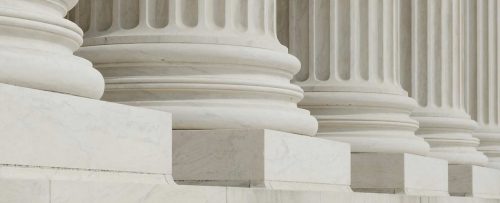
News & Events | CWP Admin
Summary: DOL Advisory Board’s Working Group on Presumptions
March 16, 2017
March 16, 2017
CWP Admin
News & Events
The Department of Labor Advisory Board on Toxic Substances and Worker Health’s Working Group on Presumptions (WG) held a teleconference on March 14, 2017. The purpose of the meeting was to determine whether some diseases could be automatically presumed to be the result of toxic exposures at Department of Energy nuclear weapons facilities.
The WG discussed four diseases:
- Asbestos related diseases
- COPD
- Asthma
- Solvent induced hearing loss
The Department of Labor Division of Energy Employees Occupational Illness Compensation (DEEOIC) previously issued guidance to the claims examiner (CE) on these diseases. The WG reviewed the policies and found areas where the policies can be improved.
The WG members acknowledged that exposure to asbestos would have decreased after the 1970’s because of regulations passed during this period which curtailed the use of asbestos. However, they also acknowledged that exposure to asbestos did not disappear. DEEOIC’s 2015 Final Circular, 15-05, directs the CEs to “obtain definitive and compelling evidence to show that any employee at DOE facility after 1986 and consistent, unprotected contact with asbestos…” While personal protection equipment improved over the years, it was possible for exposure past 1986, especially during the decontamination and demolition activities.
The WG also noted that this Final Circular gives conflicting guidance to the CEs on whether to send a claim to an industrial hygienist (IH) or contract medical consultant (CMC). The beginning of the circular provides instructions when a CE can presume asbestos exposure, for example, by labor category. Yet, the final sentence of the circular states, “Any findings of exposure, including infrequent, incidental exposure, require review of a physician…”
The circular lists the labor categories which most likely would have been exposed to asbestos. The WG thought this may be too restrictive as it was possible that someone with a different labor category listed in their employment records may actually have performed similar tasks or have been near the job, such as foremen or supervisor. The WG discussed the possibility of using a more general labor category such as “production workers”, “maintenance workers”, etc.
DEEOIC presumes that COPD is compensable when there is evidence of asbestos exposure. However, the WG noted that current scientific literature shows that exposure to vapors, gasses and dusts are also responsible for COPD. The WG also objected to the non-smoking requirement as exposure to vapors, gasses and dusts would contribute to the development of COPD in a smoker. The WG also noted that some workers have symptoms of COPD months or years before it is officially diagnosed.
The matrix in the procedure manual recommends that the CEs determine that no other lung disease would have the same results from medical testing before approving a claim for COPD. The WG also stated that it is beyond the CEs expertise.
Prior to the meeting, an advocate emailed the WG notifying them that the DEEOIC Final Bulletin concerning occupational asthma, 16-01, does not address the contributory or aggravating factor as specified in the law. The WG agreed that, if a worker had asthma, exposures to toxic substances can aggravate or contribute to the development of occupational asthma and should be compensable.
The last disease discussed was hearing loss due to exposures to solvents. DEEOIC lists seven solvents which could cause a specific type of hearing loss if a worker used them continuously for a ten-year period prior to 1990. DEEOIC provided an internal memo from December 2016 between the toxicologist and the Chief of the Policy Branch which provided the rationale for the April 2013 change in their procedure manual. The WG observed that the scientific papers used as citations were from 2007 and thought there may be more recent studies to explore. They also thought that it may be possible to expand the number of solvents which are similar in nature to the seven listed in the procedure manual and the years covered past 1990.
It was noted that the internal memo was the only document which provided guidance on policy change. One board member relayed that much of DEEOIC’s policy is driven by the interaction between the CEs and the National Office on their bi-monthly calls. She explained that a number of advocates and authorized representatives have tried to obtain summaries of these calls without success. Dr. Markowitz, Chair of the advisory board, said he would request them from DEEOIC.
The WG will draft recommendations on these four diseases and present them to the full board during their meeting April 18-20, 2017. They discussed the possibility of looking at additional diseases that may be presumed to arise from toxic exposures at the sites. However, they decided to table this until they see if DEEOIC accepts these recommendations
Dr. Markowitz acknowledge the participation by the public and valued the advocates input.
